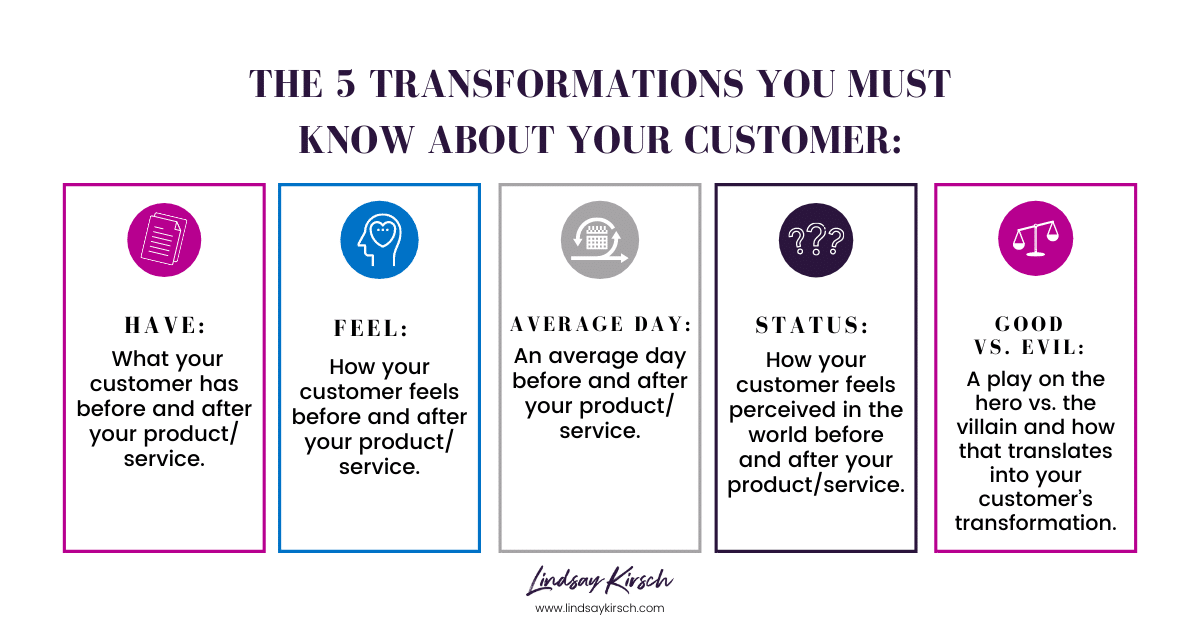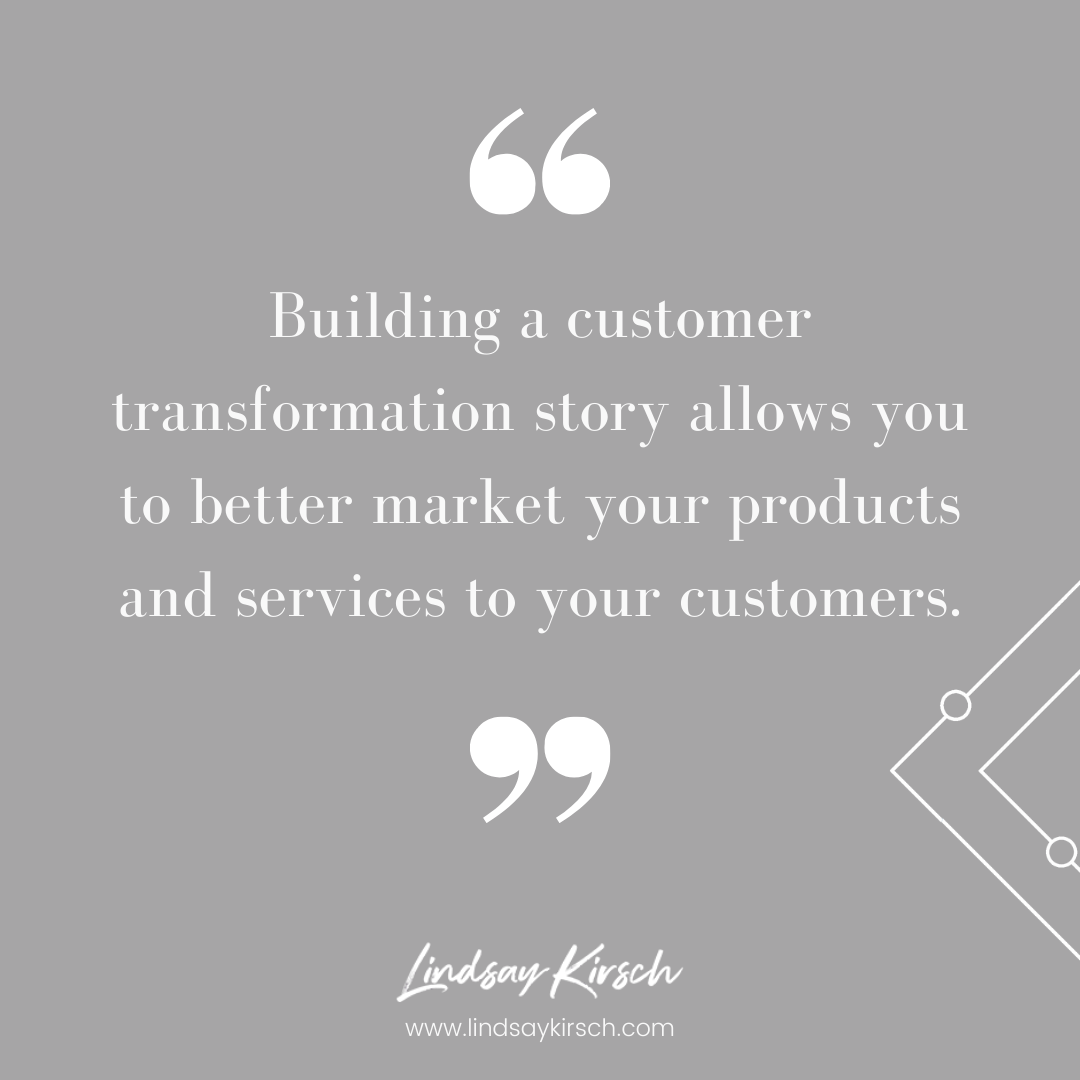You have a great product or service, and you know exactly how much it can help your customers.
Yet your customers aren’t buying into it.
This might be because you’re not conveying the right message to them. You should not only promote your business as the ultimate solution for their problems but also paint a narrative about the transformation they’ll experience afterward.
To do this, you must first map out your buyer persona. Then, you can move onto crafting a narrative around their customer transformation story.
In this post, you’ll learn the importance of building customer transformation stories and how to use them to successfully market your business to your target audience.
What is customer transformation?
Before you begin marketing a product or service to your customers, you need to fully understand the transformation it will bring them.
- Customer transformation definition: The customer transformation is the change that occurs when your customer experiences your product or service.
In other words, your customer transformation is the outcome your customer is hoping to achieve when they invest in what you’re offering them.
The best way to begin building your transformation narrative is to map it out.
Mapping out the customer transformation will give you a clear vision of the journey you’ll take them on. And it’ll help you define the results you’re promising them.
Then, you can better tailor your email communications and marketing automations to the exact outcome your customers are looking for. You’ll be able to speak to the transformation they’re looking for, and therefore persuade them to invest in your product or services.

How can I map out my customer transformation?
Enter the customer transformation grid.
The customer transformation grid is a series of prompts that’ll help you build your customer transformation stories. It’s a worksheet that allows you to essentially map out the journey you’ll be taking your customer on by describing the before and after states. That is, how they felt before investing in your services compared to how they’ll feel afterward.
You will have a different transformation grid for each product or service you offer. Every grid will include the following:
- Have: What your customer has before and after your product/service.
- Feel: How your customer feels before and after your product/service.
- Average Day: An average day before and after your product/service.
- Status: How your customer feels perceived in the world before and after your product/service.
- Good vs. Evil: A play on the hero vs. the villain and how that translates into your customer’s transformation.

Do you see how you can begin to map out your customer transformation with these prompts? This will help you build a narrative that will appeal to your target customers and define where exactly you should share that narrative.
Let’s delve into an example to give you a better idea of how this works.
What does a customer transformation story look like?
Let’s build a narrative around the transformation your customers will receive after working with you. The better you know your customer, the more relatable that narrative will be — and the less your customers will want to tune you out.
For this example, we’re going to be selling our services to Alex, a director of operations in a startup company. Alex is struggling with her customer service, and we want to sell her an all-in-one customer service software.
In the “have” box, we need to identify what the customer has before she implements our software. In this case, Alex has customers — but they’re not necessarily happy. She knows this because they’re not giving her company five-star ratings.
Once Alex implements our new software, however, she’ll find that 99% of her customers are providing five-star reviews. That’s a huge change!
Next is the “feel” box. Right now Alex is feeling frustrated. She wants to provide better customer service but is overwhelmed with finding the right solution. After Alex invests in our product, her negative feelings turn to excitement about her company’s ability to provide great customer support.
Now on an average day, Alex goes to work knowing that there’s a problem. This really bothers her, especially since customer service is one of the values behind her company.
After implementing the software, however, she looks forward to diving into customer service reports because she knows that they’re full of five-star reviews.
Are you beginning to get the picture? A customer transformation grid lets you describe your customer at each stage of their transformation. The result will be the story you’ll use to market your services.
The final two steps are status and good versus evil.
When it comes to status, Alex feels like her business is lost among her competitors. With better customer support, though, her company is now perceived at the top of her industry.
Finally, Alex often believed that automated customer service tools were the villain. They were impersonal, ineffective, and went against her values of providing a real human-to-human connection.
However, after the implementation of the software, she feels like a hero. Her customers provide rave reviews, and they feel heard by the company. Overall, it’s a positive success story.

Why You Must Have an Customer Transformation Story
Now you understand why building a customer transformation story allows you to better market your products and services to your customers –
Your customers will be more willing to invest in your offer when they hear about the wonderful transformation you can provide them.
This will help them understand that your products aren’t a frivolous offering painted as the solution to all their problems. You’ve mapped out the journey you’ll take them on — and explained the exact outcome they can expect to receive from working with you.
It’ll be hard for them to turn down an offer like that.
Do you have any questions about building your customer transformation story? Let me know in the comments below.



